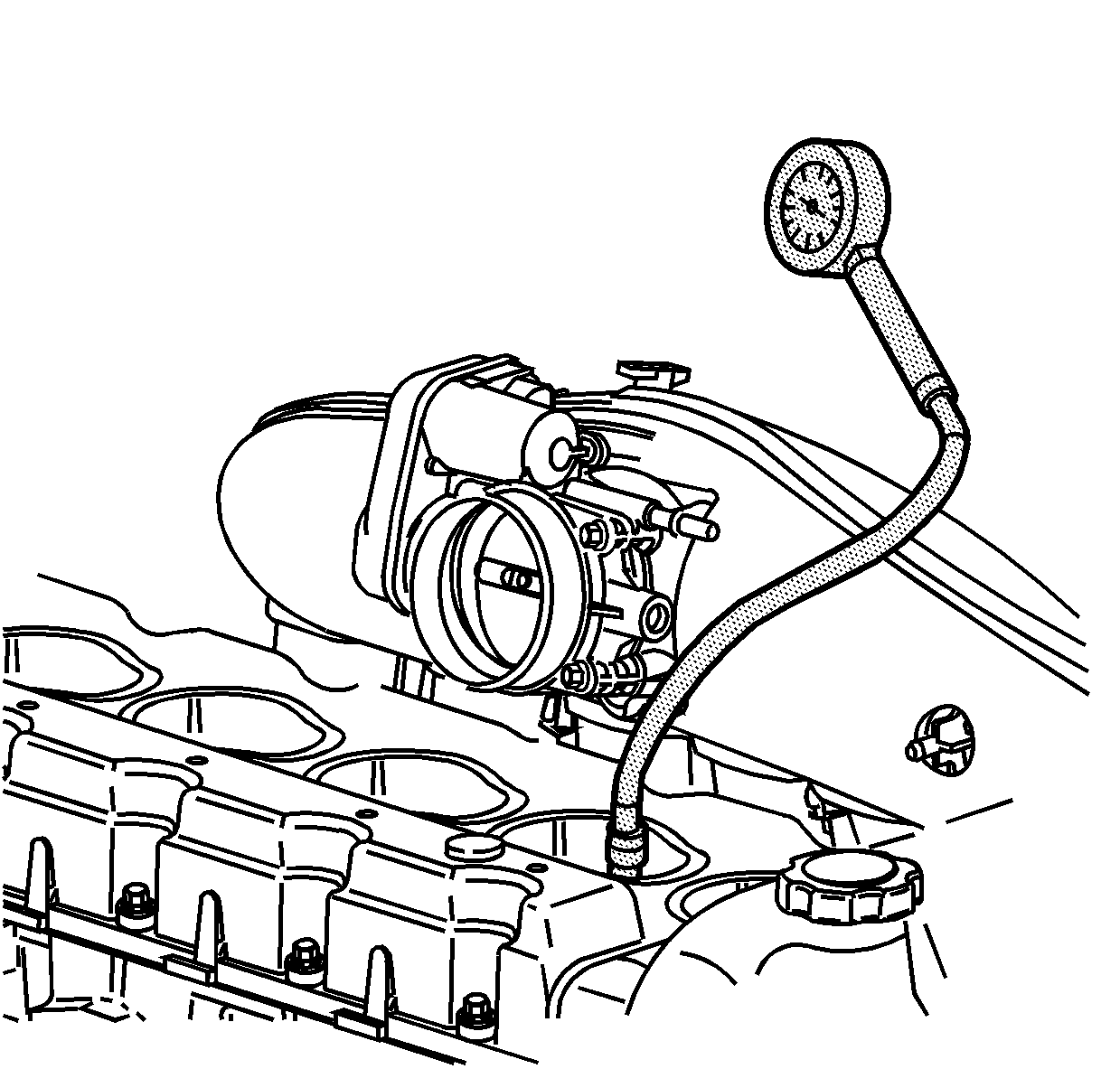Tools Required
J 38722 Compression
Tester
A compression pressure test of the engine cylinders determines the condition
of the rings, the valves, and the head gasket.
Important: The battery must be at or near full charge. Do not block the throttle
open.
- Remove the air duct from the throttle control module.
- Remove the ignition control modules.
- Disable the fuel system.
- Remove the spark plugs.

- Measure the engine compression,
using the following procedure:
| 5.1. | Firmly install J 38722
to the spark plug hole. |
| 5.2. | Have an assistant crank the engine through at least four compression
strokes in the testing cylinder. |
| 5.3. | Check and record the readings on J 38722
at each stroke. |
| 5.5. | Repeat the compression test for each cylinder. |
- Record the compression readings from all of the cylinders. A normal
reading should be approximately 1482 kPa (215 psi).
The lowest reading should not be less than 70 percent of the highest
reading.
- The following are examples of the possible measurements:
| • | When the compression measurement is normal, the compression builds
up quickly and evenly to the specified compression on each cylinder. |
| • | When the compression is low on the first stroke and tends to build
up on the following strokes, but does not reach the normal compression,
or if the compression improves considerably with the addition of
three squirts of oil, the piston rings may be the cause. |
| • | When the compression is low on the first stroke and does not build
up in the following strokes, or the addition of oil does not affect the
compression, the valves may be the cause. |
| • | When the compression is low on two adjacent cylinders, or coolant
is present in the crankcase, the head gasket may be the cause. |
- Install the air duct to the throttle body.
- Install the spark plugs.
- Enable the fuel system.
- Install the ignition control modules.

